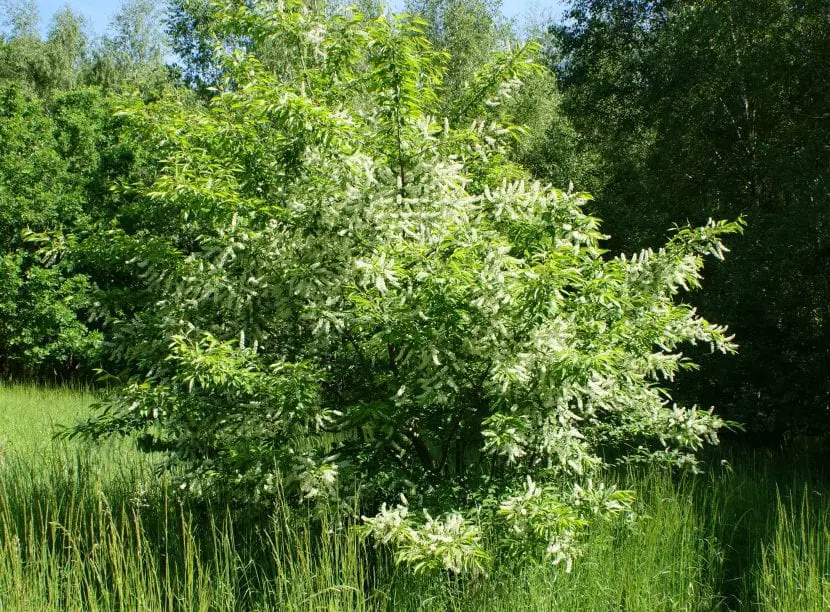

Image – Wikimedia / Krzysztof Ziarnek, Kenraiz
The Prunus serotine It is a well-known tree among European horticulturists that fights against invasive species. And, what seemed like a harmless introduction of a plant to that continent in 1623, today it seems to like the climate so much that it has become naturalized throughout almost the entire territory.
It grows very fast, and although it is really a plant with great ornamental value, if you want to have it in the garden first You have to check if it is allowed or not in our community.
Origin and characteristics


Image – Wikipedia, the free encyclopedia
It is a deciduous tree belonging to the family Prunus which is native to North America, from eastern Quebec and Ontario to Texas, reaching as far as Florida. It is known as a black cherry, late black cherry, or capulí. It can reach a height of 15 to 30 meters, with a trunk that is usually straight and not very wide – it thickens about 40-50cm-. Its leaves are simple, with a toothed margin, and are 6 to 14cm long.
Blooms in spring. Its flowers are grouped in white inflorescences. The fruit is a drupe one centimeter in diameter, black in color. Its flavor is a bit astringent and bitter if consumed fresh; however, the birds seem to like it.
Uses and properties
Apart from being used as an ornamental in the countries where it is allowed, in its places of origin it is also used as a medicinaltaking advantage of the leaves, branches and their fruits to combat coughs, drowning, colds, flu, colic and rheumatism.
What are their cares?


Image – Wikimedia Commons / Syria
If you can and want to have a copy, we recommend that you provide it with the following care:
- Location: The Prunus serotine It must be outside, in full sun.
- Earth: grows in fertile soils, with good drainage.
- Irrigation: water 4 or 5 times a week during the summer, and 1-2 times a week the rest of the year.
- Subscriber: in spring and summer, with organic fertilizers once a month.
- Multiplication: by seeds in spring.
- Rusticity: resistant up to -10ºC.
What did you think of this tree?

